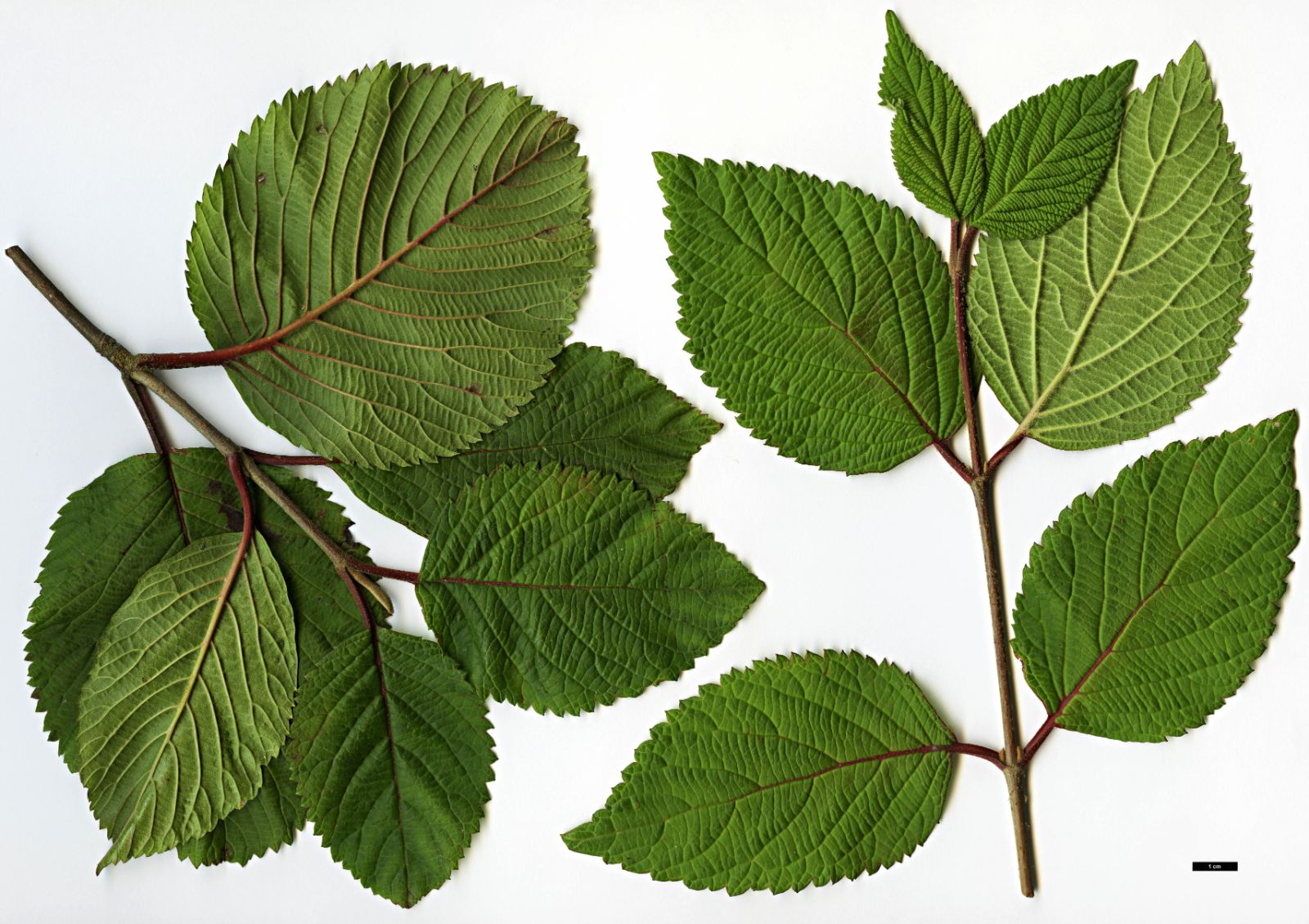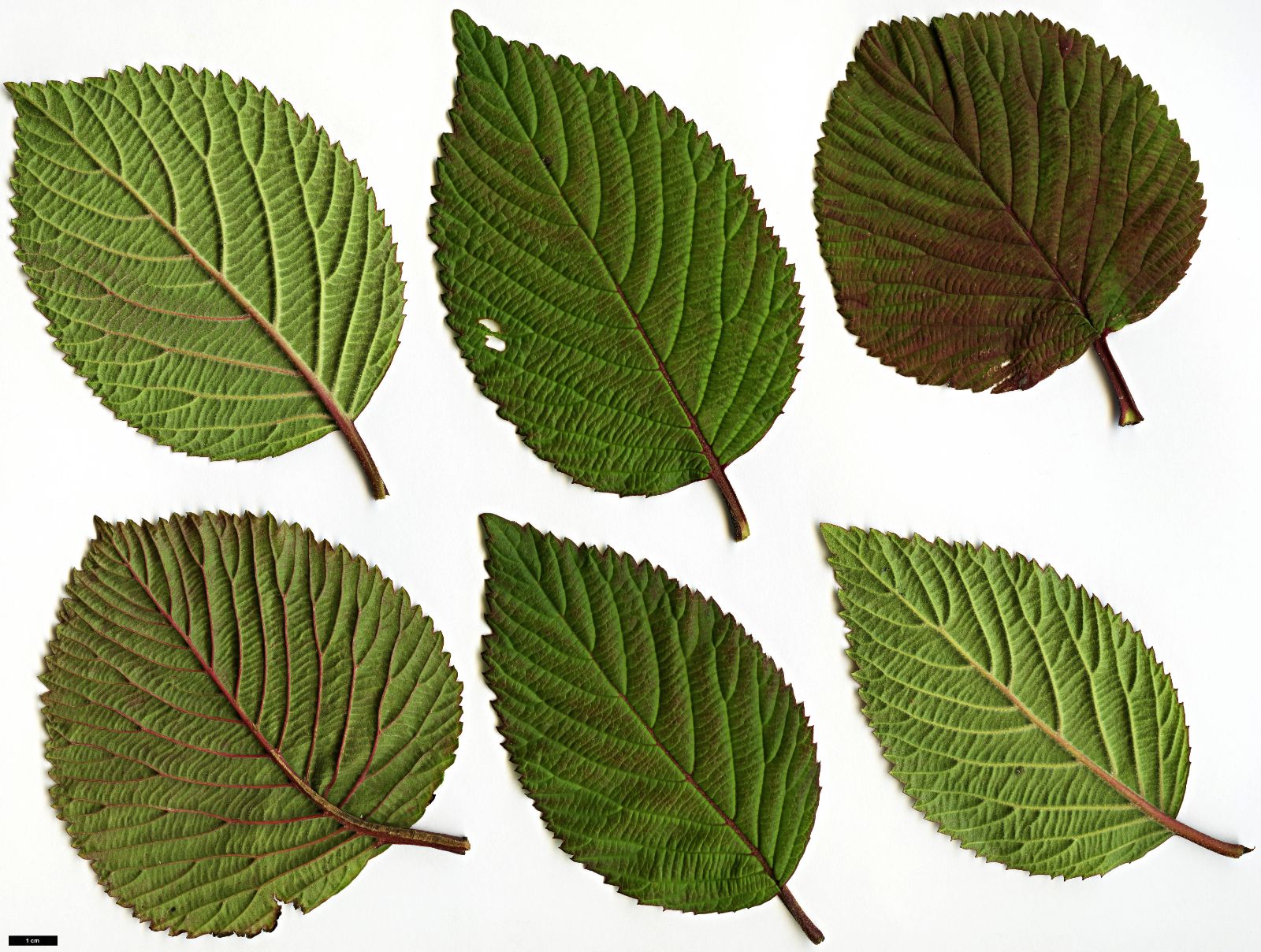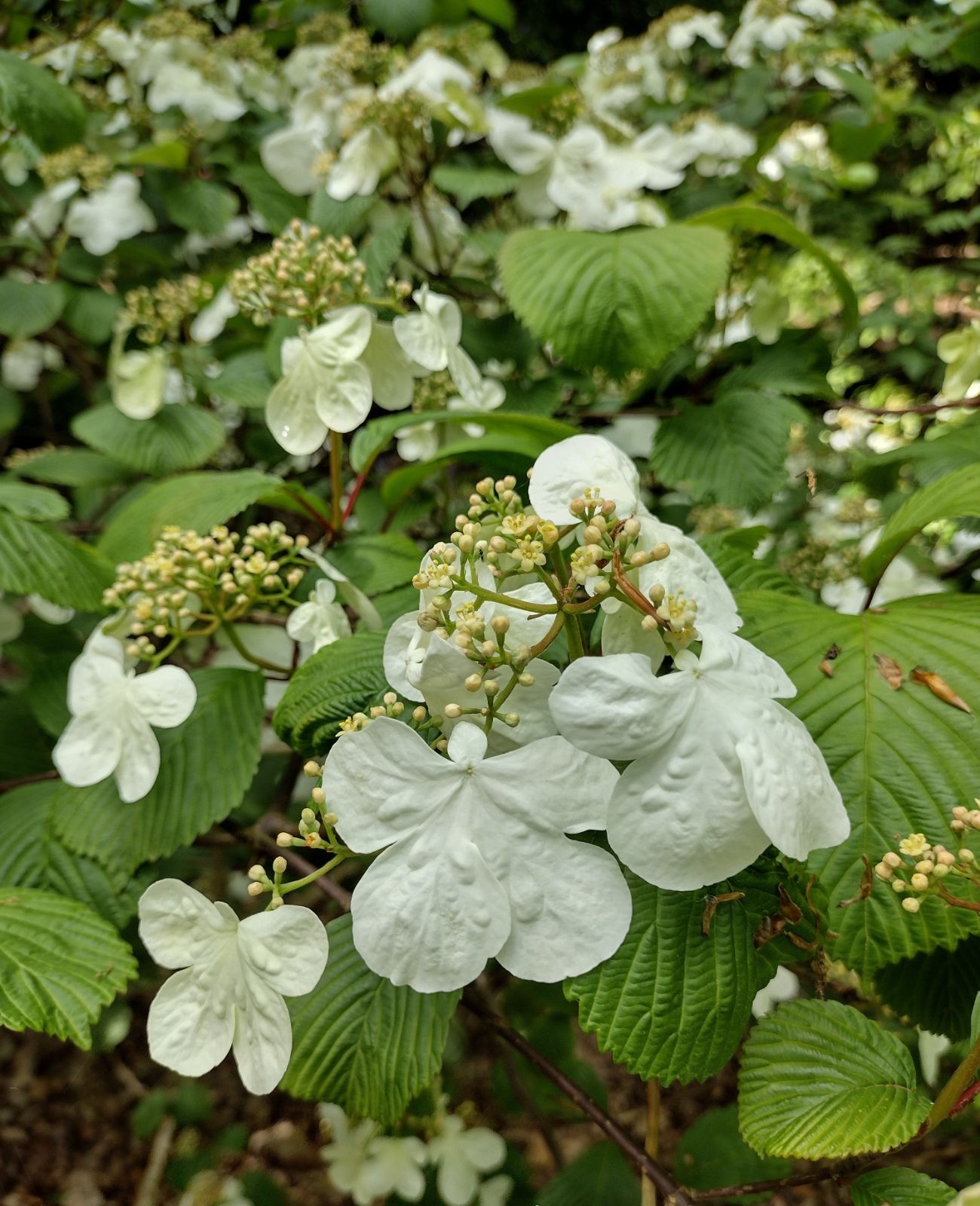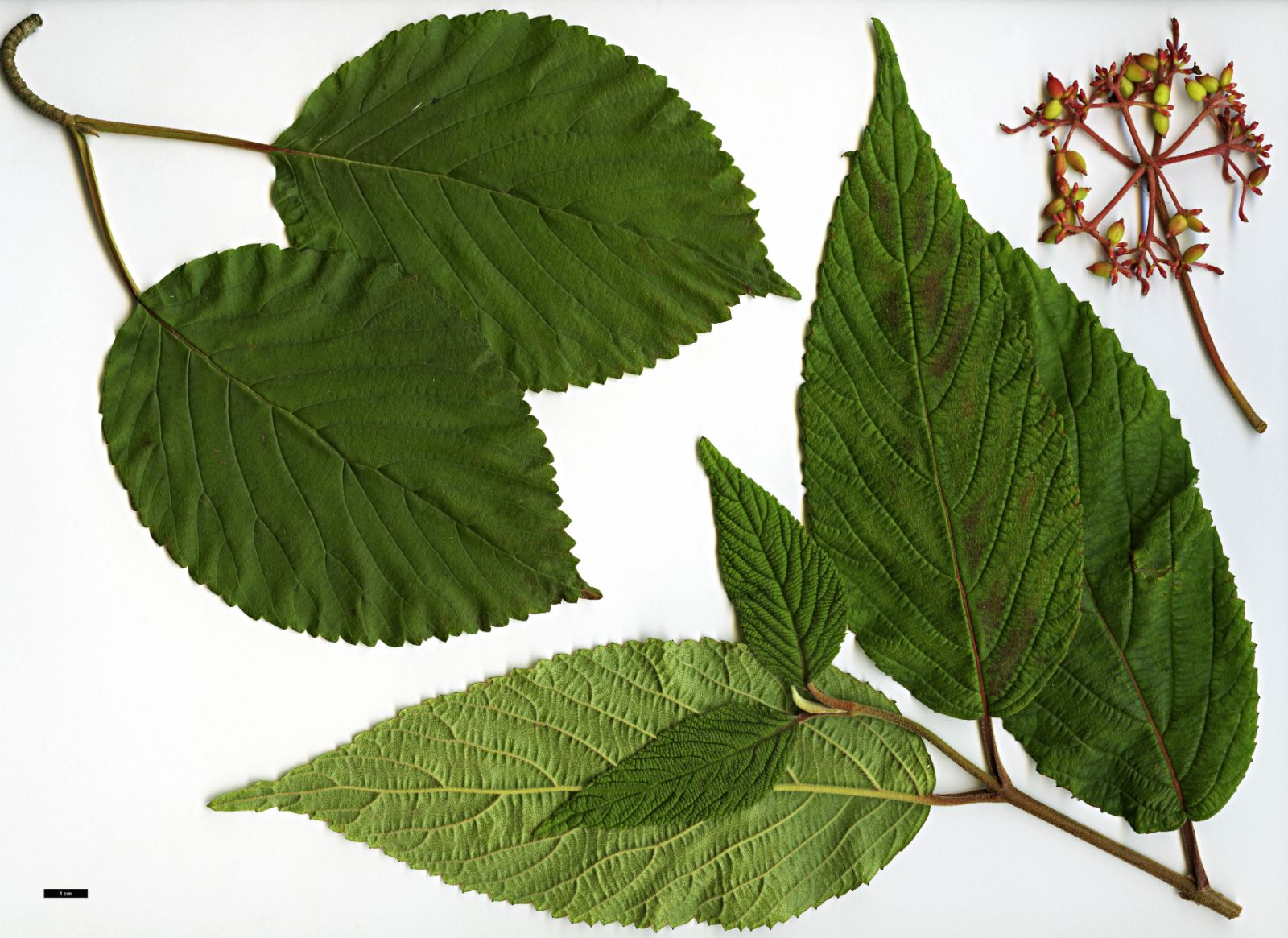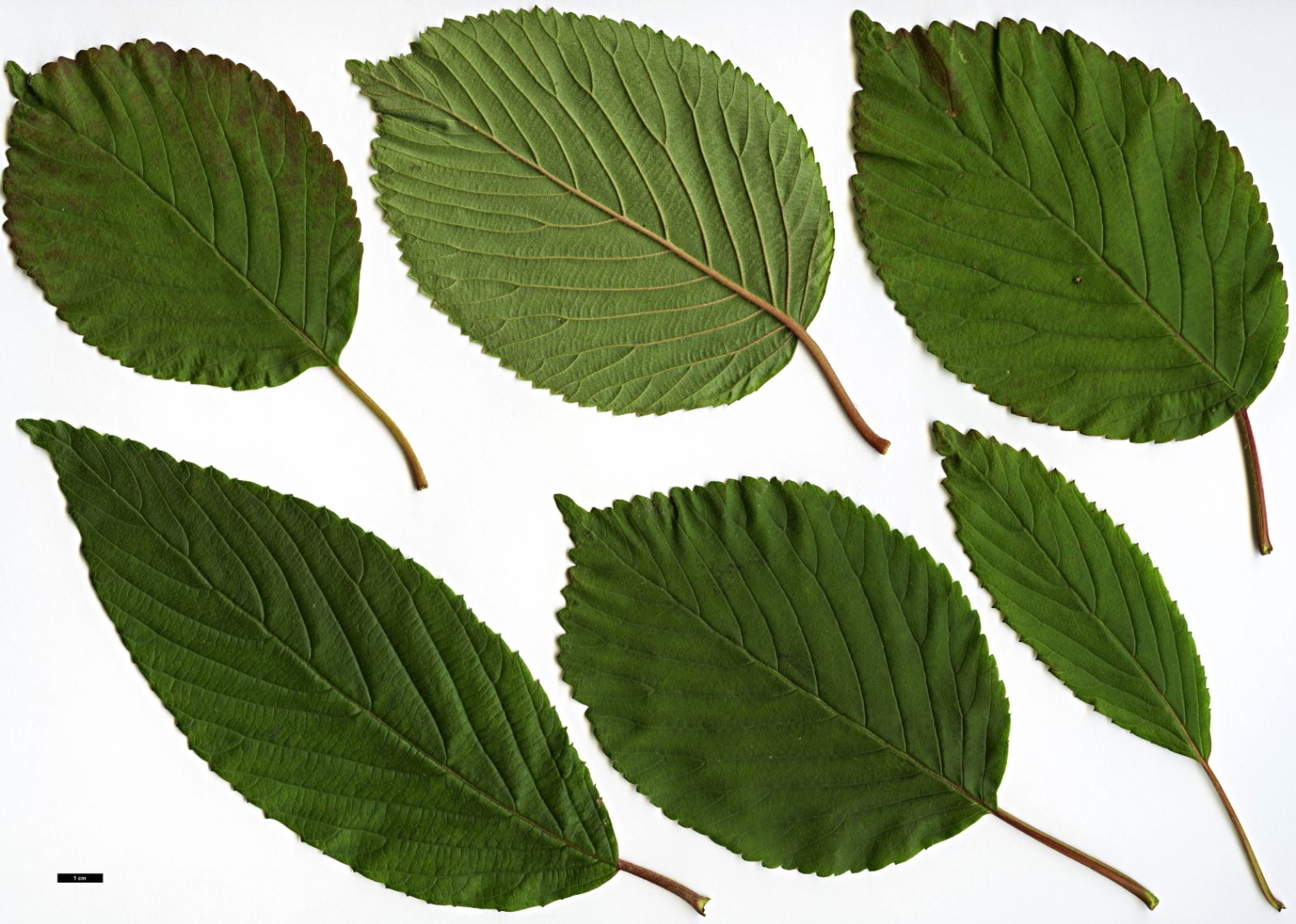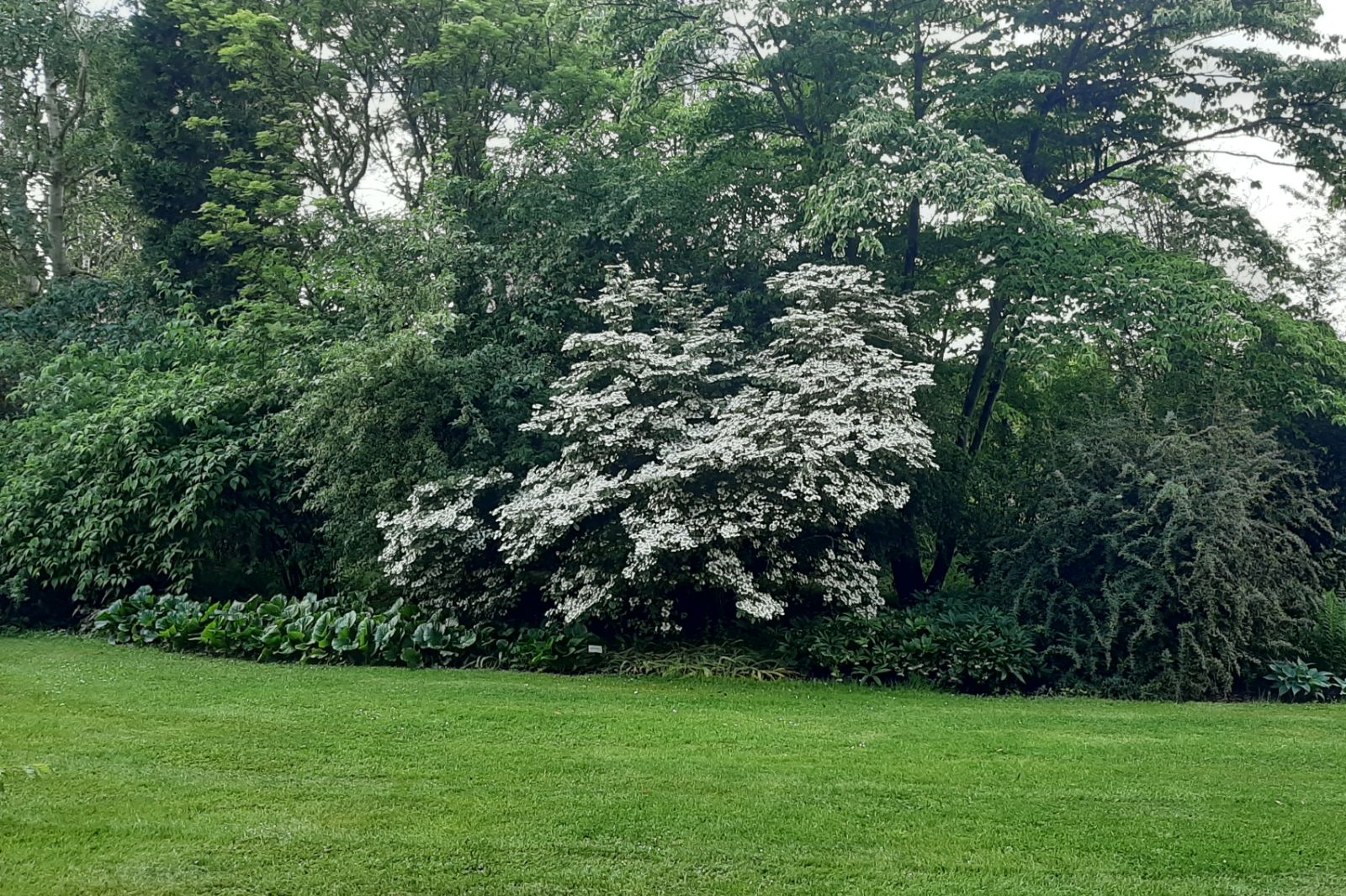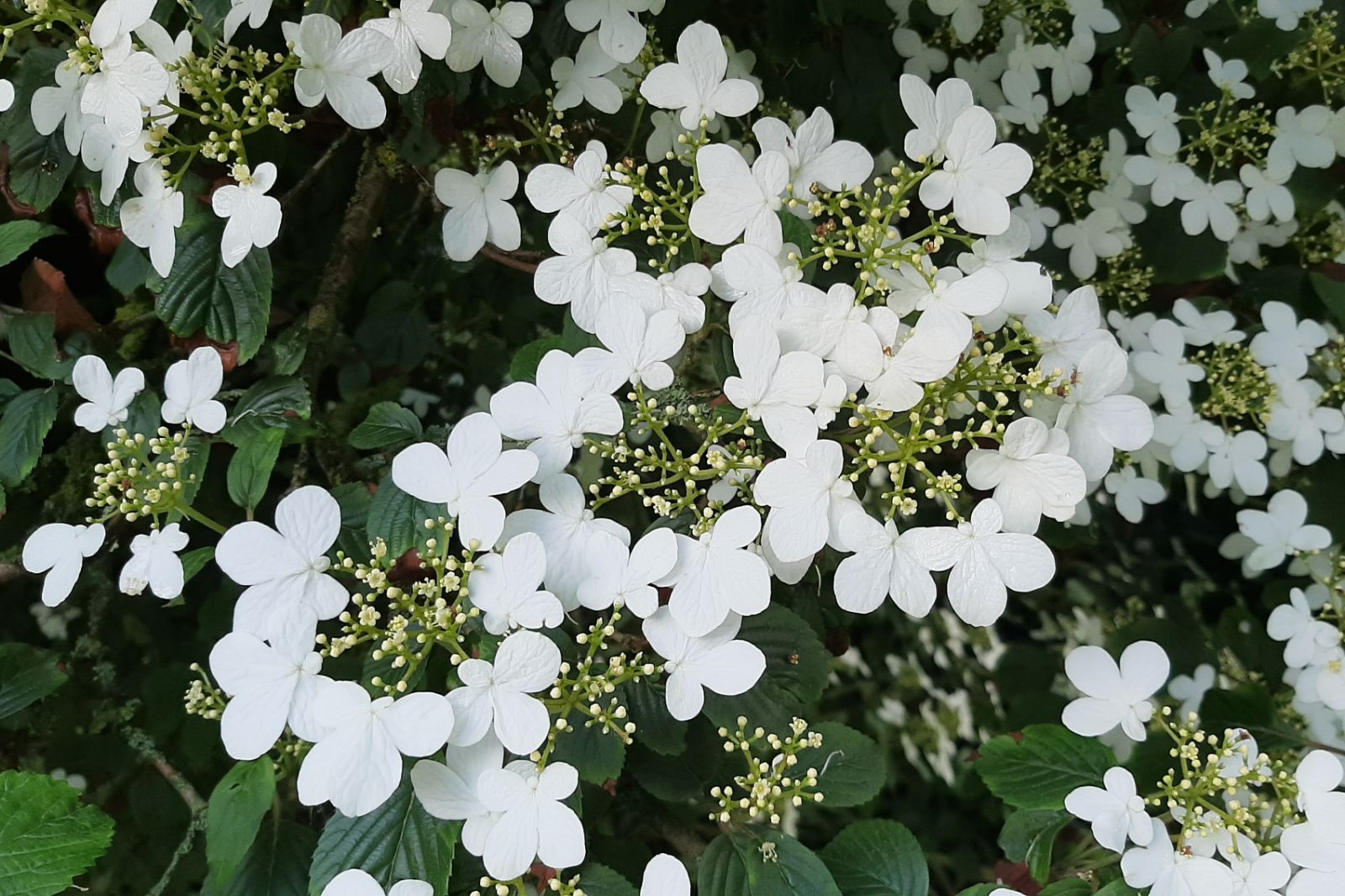Viburnum plicatum
Credits
Article from Bean's Trees and Shrubs Hardy in the British Isles
Recommended citation
'Viburnum plicatum' from the website Trees and Shrubs Online (treesandshrubsonline.
Genus
Infraspecifics
Other taxa in genus
- Viburnum acerifolium
- Viburnum betulifolium
- Viburnum × bodnantense
- Viburnum buddleifolium
- Viburnum burejaeticum
- Viburnum × burkwoodii
- Viburnum × carlcephalum
- Viburnum carlesii
- Viburnum cassinoides
- Viburnum cotinifolium
- Viburnum cylindricum
- Viburnum davidii
- Viburnum dentatum
- Viburnum dilatatum
- Viburnum erosum
- Viburnum farreri
- Viburnum foetidum
- Viburnum grandiflorum
- Viburnum harryanum
- Viburnum henryi
- Viburnum hupehense
- Viburnum japonicum
- Viburnum kansuense
- Viburnum lantana
- Viburnum lantanoides
- Viburnum lentago
- Viburnum macrocephalum
- Viburnum molle
- Viburnum nudum
- Viburnum odoratissimum
- Viburnum opulus
- Viburnum phlebotrichum
- Viburnum propinquum
- Viburnum prunifolium
- Viburnum rhytidophyllum
- Viburnum rigidum
- Viburnum rufidulum
- Viburnum schensianum
- Viburnum setigerum
- Viburnum sieboldii
- Viburnum suspensum
- Viburnum tinus
- Viburnum utile
- Viburnum veitchii
- Viburnum wilsonii
- Viburnum wrightii
Thunberg described two forms of this species: V. tomentosum was the normal wild form, and the name V. plicatum was given by him to a form with ‘snowball’ inflorescences cultivated in the gardens of Japan. Since the former name had priority, the garden plants with the snowball type of inflorescence took their natural place as a variety or botanical form of the wild V. tomentosum. Unfortunately, as Dr Rehder pointed out in 1945, the name V. tomentosum Thunb. (1784) is antedated by V. tomentosum Lam. (1778), which is V. lantana. It is therefore illegitimate, and the order of nature must be reversed: V. plicatum becomes the correct name for the species as a whole; the snowball forms are collectively V. plicatum f. plicatum, and the wild plants V. plicatum f. tomentosum. In the following account the wild form and the cultivars with normal inflorescences are treated first.
From the Supplement (Vol. V)
† cv. ‘Chyverton’. – Of low, spreading habit. Flowers all sterile as in typical V. plicatum. The original plant grew in the garden of the late Lionel Fortescue and, propagated in 1964 by Nigel Holman, it has attained a height of 4 ft and a width of some 20 ft in his garden at Chyverton, Cornwall. It received an Award of Merit when shown at Chelsea in 1985.
'Cascade'
See under ‘Rowallane’.f. plicatum
Synonyms
V. dentatum L. sens . Thunb., not L.
V. plicatum Thunb.
V. tomentosum var. plicatum (Thunb.) Maxim.
V. t. var. sterile K. Koch
This stands in the same relation to V. plicatum f. tomentosum, i.e., to the normal wild state of the species, as the common Snowball tree does to V. opulus, the whole of its flowers being transformed into the showy sterile kind, and the inflorescence from a flat umbel to an almost globose one. It has long been cultivated in the gardens of Japan and China, and was first mentioned under its Japanese name by Kaempfer in 1712. It was introduced by Fortune from China in 1846 to the garden of the Horticultural Society, but seems to have been overshadowed by V. macrocephalum, which came at the same time. But around 1860 Fortune reintroduced it from Japan for Standish, and by the 1870s it was being grown in the open in many gardens and found to be hardy. It grows to about 8 ft high and almost as much wide. Towards the end of the last century the German firm of Hesse distributed a form they called V. plicatum grandiflorum, which, judging from a plant received from them at Kew in 1898 had flower-heads no larger than in the second Fortune introduction, but densely set on the branch and with broadish, neatly toothed leaves. This seems very similar to plants distributed in the USA at about the same time by Meehan’s and Parsons’ nurseries as V. tomentosum rotundifolium. But there is another clone under the name V. plicatum grandiflorum with larger trusses and a more tiered habit of growth than the old form.
f. tomentosum (Thunb.) Rehd.
Synonyms
V. tomentosum Thunb., not Lam.
V. plicatum var. tomentosum (Thunb.) Miq
A deciduous shrub of bushy habit, 6 to 10 ft high, the branches mostly horizontal, covered when young with a minute, starry down. Leaves ovate or oval, tapered to a point, rounded or wedge-shaped at the base, 2 to 4 in. long, 1 to 2{1/2} in. wide, toothed except at the base, dull dark green above with scattered hairs at first, pale, greyish, and stellately downy beneath; stalk {1/2} to {3/4} in. long. Inflorescence a flat umbel 2{1/2} to 4 in. across, borne at the end of a short, usually two-leaved twig; the centre is filled with the small perfect flowers, surrounded by a few large, white sterile ones, 1 to 1{1/2} in. across. Blossoms in early June. Fruits roundish egg-shaped, at first coral red, finally blue-black.Native of Japan and China; introduced from Japan about 1865; reintroduced by Maries (see ‘Mariesii’) and later by Wilson. It seems to have been overshadowed by typical V. plicatum, i.e., the snowball forms, until the selection ‘Mariesii’ began to spread into gardens early this century. It is now almost wholly represented in gardens by named selections.
'Mariesii'
A selection with larger inflorescences than normal and ray-flowers up to about 1{3/4} in. wide, on common stalks to about 2{1/2} in. long. A splendid shrub of tabular habit, growing best in a moist, light soil, where it will spread indefinitely by self-layering if permitted to do so. In the drier parts of the country it may need some shade, but elsewhere is quite happy in full sun. A large plant is a fine sight in early summer, each branch set from end to end with pure white corymbs. As always in the wild form, the ray-flowers are very asymmetrical and irregular – more so than in V. lantanoides and V. furcatum and much more so than in V. opulus, where the ray-flowers are fairly regular. Most flowers are slightly rotated on their axis, so that one of the two innermost segments appears to be basal, and is very small and rounded. The leaves turn dull crimson or purplish red in autumn, but fruit is not freely set. ‘Mariesii’ was introduced by Charles Maries, who collected for Messrs Veitch in Japan and China 1877–9. It was named by Veitch in 1902 and received an Award of Garden Merit in 1929.The similar ‘Lanarth’ was raised at Lanarth and received an Award of Merit when shown from Exbury in 1930. It has become confused with ‘Mariesii’, but so far as can be ascertained the true ‘Lanarth’ has ray-flowers to well over 2 in. wide; the common-stalk of the inflorescence is about {1/2} in. longer than in ‘Mariesii’ and rather stout; and the fertile flowers are not so densely arranged. It is really a rather coarser plant, and certainly no more effective in the garden. It is possible that some plants grown as ‘Lanarth’ are really ‘Mariesii’ and vice versa, while plants imported from the continent under one or the other name are said in some cases to be the normal wild form (these may be seedlings).'Nanum Semperflorens' ('Watanabei')
An anomalous form of very dense habit, producing rather small inflorescences throughout the summer, but giving a good display at the normal season once it is established. Despite the epithet nanum it has attained a height of 6 ft in the Hillier Arboretum. It can be kept dwarf by pruning in early spring; by this treatment flowering is delayed until late summer and autumn, when a splash of white in the garden is more appreciated. This viburnum was introduced to Britain from Wada’s nursery; the original plant was found wild in Japan.

